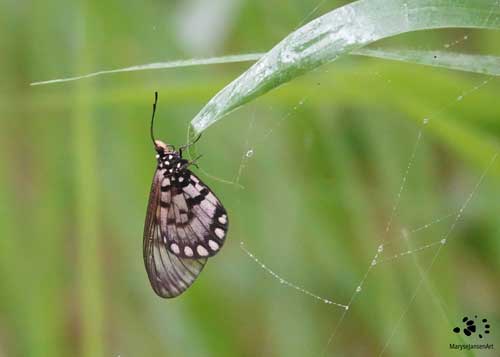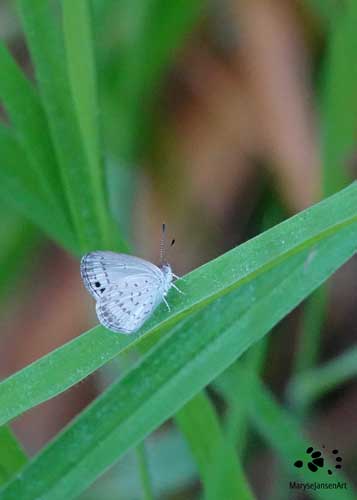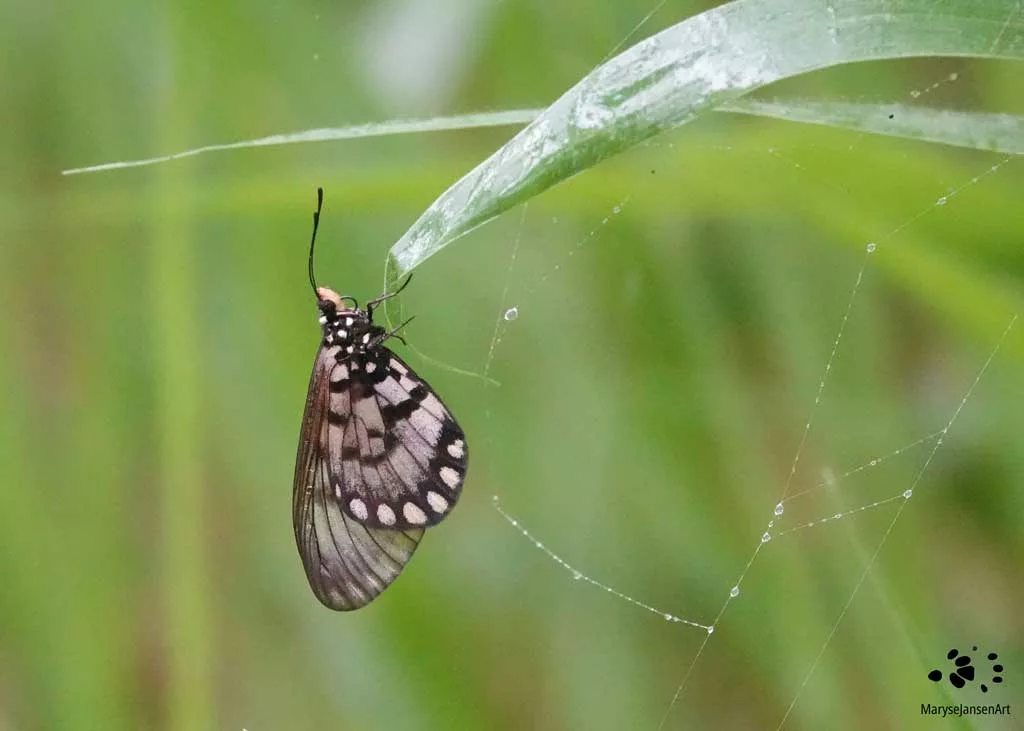Wildlife Photography with marysejansenart
Ponderings on what does it mean to be visited by a butterfly? what do butterflies do when it rains? And what is the function of their antennae?

Butterfly Season tends to be during the warmer summer months. This year we have experienced a particular long, warm (and wet!) summer here in south-east Queensland. It has served the general insect populations well, including the butterflies. During my walk today I spot a variety of species, such as the Glasswing Butterfly, the Evening Brown, the Small Grass Yellow, the Dusky Blue and more! They flutter and fly through the undergrowth, in search of nectar.
Table of Contents
Butterfly sign of positive personal transformation?
Some of them are shy, others come very close to me and even dart around my head! It makes me smile. They are so beautiful and for some reason they seem to seek me out. I am aware that in many cultures being visited by a butterfly in this way has deep spiritual meaning. Most commonly it is referred to as a sign that you are going through a transformation leading to personal growth. That they are encouraging you to let go of limiting patterns and beliefs and embrace new perspectives with hope, courage and optimism.
I reflect on my own journey and they are not wrong! I am definitely going through deep transformational changes and I am looking ahead with excitement to my new path! Isn’t that interesting? I mean, I have not experienced before that butterflies would come up so close to me repeatedly – other then over the past few weeks!
They are a joy to watch but difficult to photograph when they flutter about. A little summer shower helps me out. A lot of them land on the vegetation for a while to sit the rain out.
About the Glasswing Butterfly
Let’s take a look at the Glasswing Butterfly (Acraea andromacha), see featured image. I rarely see these ones sitting still so this is a great opportunity to have a better look! It has its wings folded though in this seated position and the transparent ‘glass’-like fore wings are partly folded inside the creamy-white, black-spotted hind wings. Its wingspan is about 60mm. Glasswings keep fairly low to the ground, between 0.5 and 2m height. They rest briefly on low plants in the undergrowth of the open woodlands or grasslands that they choose as their habitat.
You can spot Glasswing Butterflies in northern and eastern Australia, as far south as central New South Wales. Incidental sightings have been reported in other parts of Australia as well.
Eggs are laid on the host plants which are passion fruit plants. They can find a variety of those here in this bush land, including native and weedy passion fruit plants. The caterpillars are pale brown to orange and have black spines all over their 30mm long bodies. The chrysalis can be orange-brown to white, characterised by orange-brown or yellow spots with bold black lines around them. What a fashionable design!
Their own transformation from caterpillar to butterfly takes about ten days!
Meet two other beautiful butterflies: Marsh Tiger and Tawny Coster
What do butterflies do when it rains?
The light rain also gives me a chance to photograph some of the smaller butterflies, which normally are very mobile as well. It’s easy to imagine that a couple of raindrops hitting a butterfly in flight could have huge consequences for the creature. It would have a big impact as it hits their fragile wings. When they get wet, they need to dry in the sun. Their body temperature falls which makes them weak. Chances are they would fall out of the air, vulnerable to predators.
So instinctively butterflies know to seek shelter when the sky darkens. They hide out in vegetation, low to the ground in the grasses or in bushes or trees. They actually do the same at night, when it’s also too cold for them to fly!

About the Dusky Blue and the function of the antennae of a butterfly
One of these smaller species that is hiding out in the grasses is the Dusky Blue (Erina genus). The wingspan of the Dusky Blue is about 25mm. I am more familiar with sightings of the top side of their wings, which are a dark bronze colour. Females have an area with a blue sheen on there. But right now, it sits with its wings folded, just like the Glasswing did. Of course this reduces the chance of the wings getting wet!
This folded position reveals the underside of the wings which are pale and sport arcs of dark markings. Two prominent black spots are displayed on the forewings.
I also notice the antennae are prominently striped in black and white, ending in black clubs. Did you ever wonder what a butterfly uses its antennae for? They have two important functions. The first is a sense of smell. They can detect chemicals in the air which lead them to their food sources as well as potential mates.
The second function is a sense of balance. At the base of the antennae is a small organ, called Johnston’s organ, which helps the butterfly retain a sense of balance and orientation, particularly during its flight.
I leave the pretty little Dusky Blue in peace and walk on. I keep enjoying the great diversity of wildlife that shows up in the undergrowth today for a bit longer. Walk with me and see for yourself by watching the latest episode of ‘Come for a walk in the Australian Bush’ below:
If you are interested in purchasing a print of ‘Glasswing Butterfly’ or would like to see what the image looks like on the various products, please head to my shop. If you prefer ‘Dusky Blue’, click shop here.


